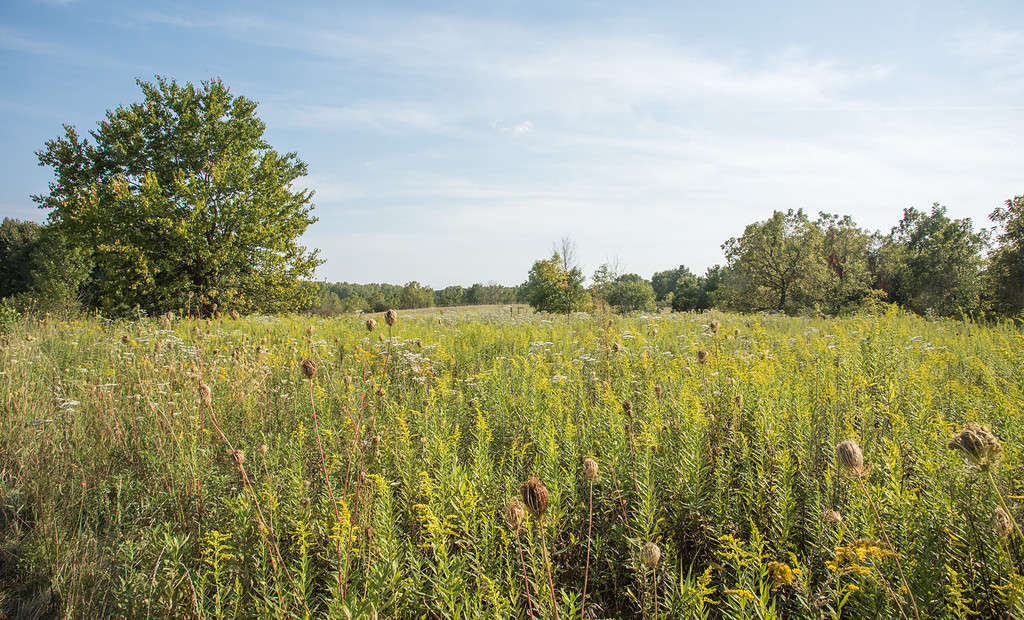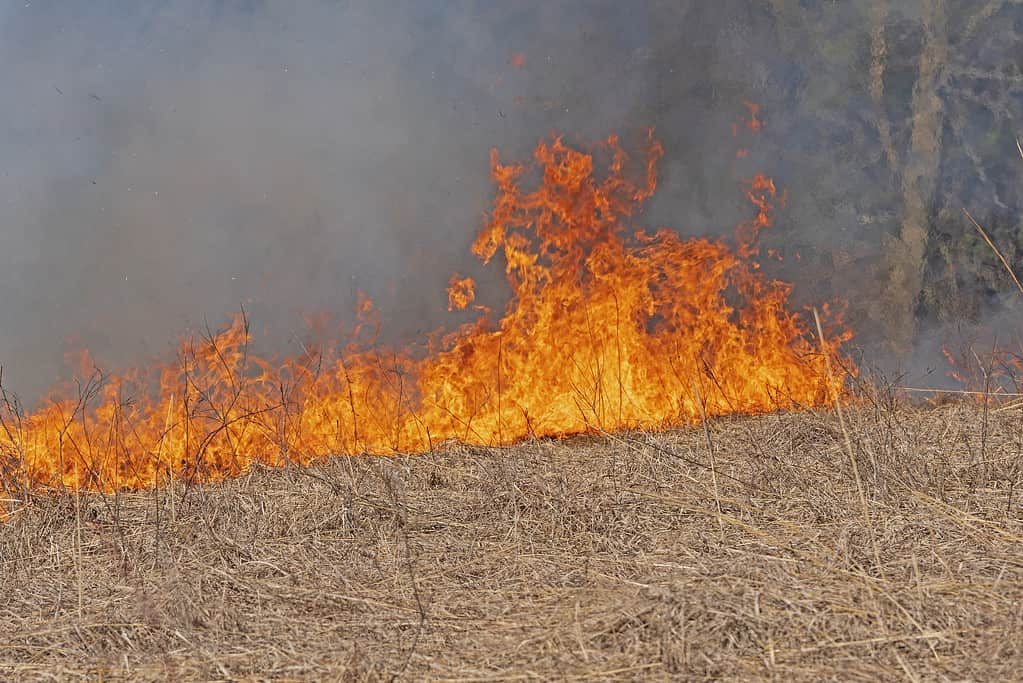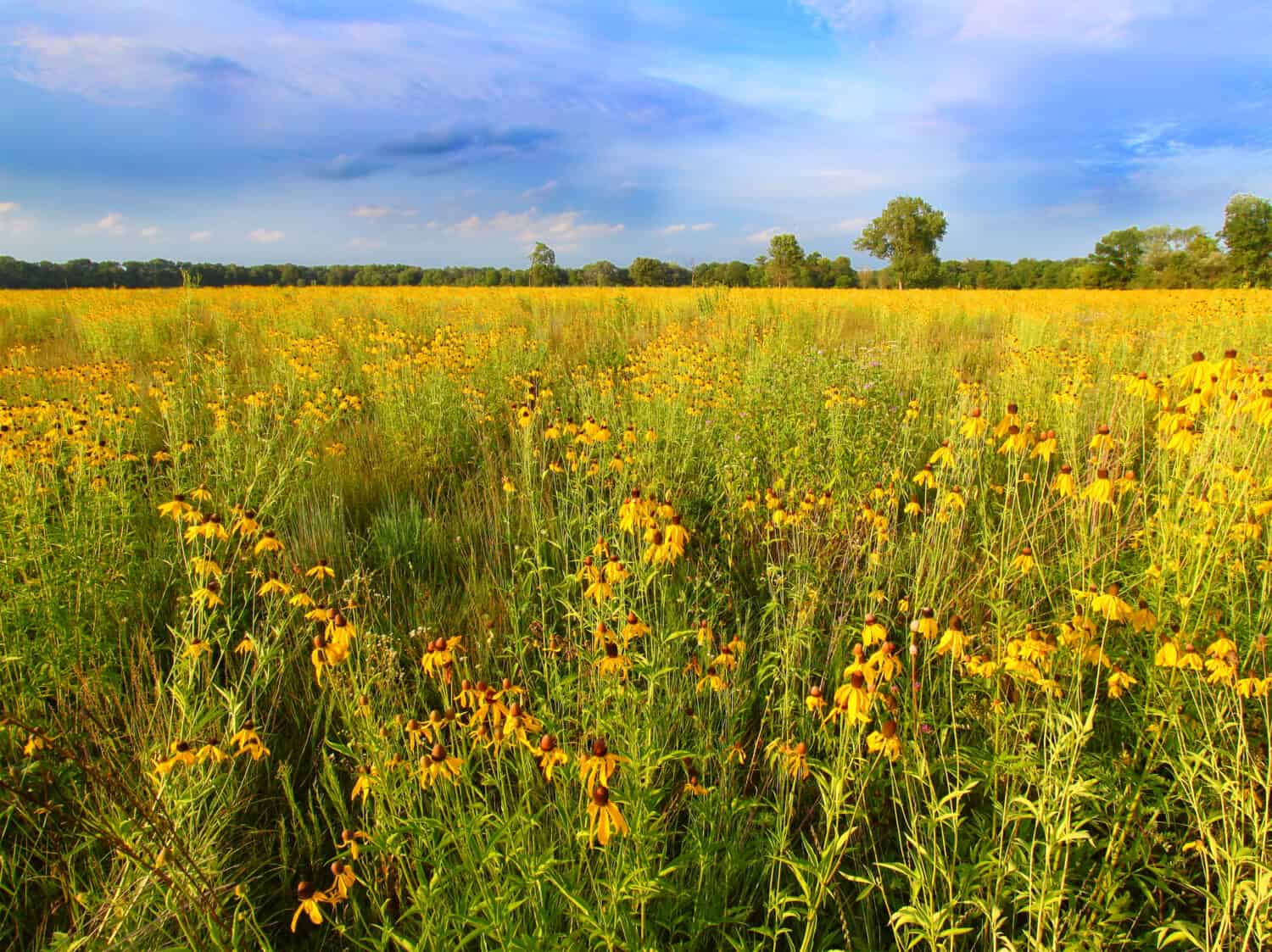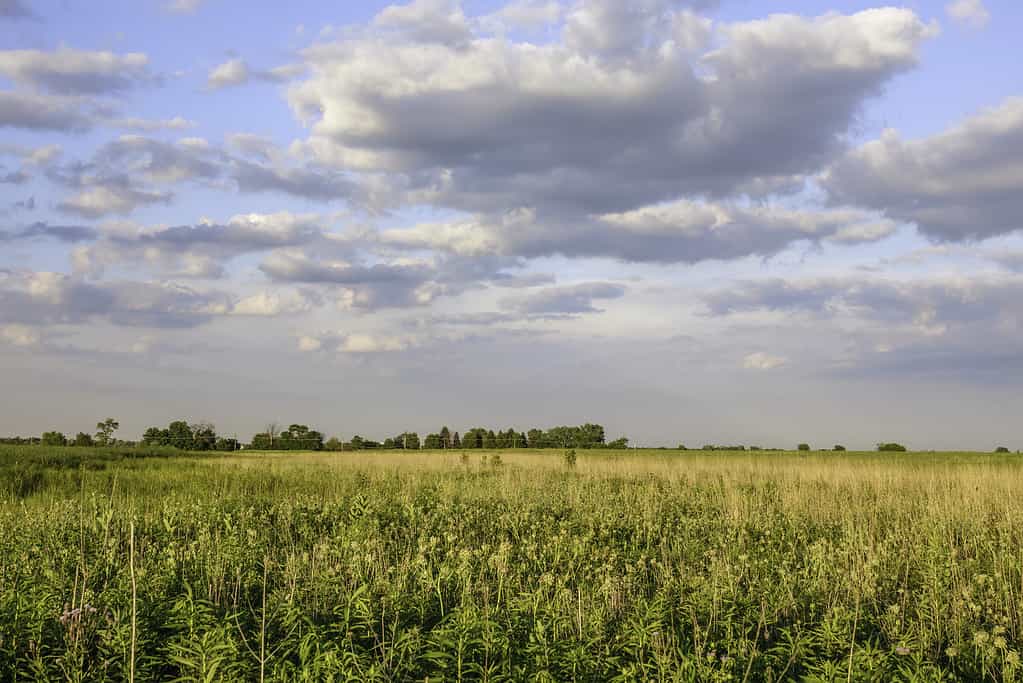Illinois is known by several nicknames, such as the “Land of Lincoln” (adopted as the official state slogan in 1955), the “Corn State,” and the “Garden State.” The most commonly used nickname, though, is the “Prairie State.”
Origins of the Nickname
The “Prairie State” moniker dates back to 1842 or possibly even earlier. When European settlers arrived in Illinois, they found sprawling prairies. In the early 1800s, Illinois’ prairie land encompassed 22 million acres. Large areas of prairies were found in 93 of Illinois’ 102 counties. In fact, the only trees to be found in central Illinois were along rivers and streams or in small prairie groves. The immense prairie land far eclipsed Illinois’ forested land, which covered about 14 million acres. Thus, the nickname was born.

Small prairies can still be found in Illinois, such as this landscape at McDowell Grover Forest Preserve in Naperville.
©iStock.com/EAGiven
What Is a Prairie?
“Prairie” is a French word that means “meadow.” A prairie is a large grassland. Grasslands account for the largest habitat in North America. In other parts of the world, a prairie may be known as a pampa (South America), veldt (southern Africa), or steppe (Asia).
Formation of the Illinois Prairies
The prairies of Illinois were formed by glacial activity. Four major glaciers covered the state’s land in the past. These glaciers acted as gargantuan steamrollers, flattening the land as they inched their way across the northern two-thirds of what would become the state of Illinois.
After the glaciers receded, the flat land in the northern two-thirds of the state sprouted grasses. Trees would struggle to grow on these prairies, but not because the soil was poor. Actually, the soil of Illinois is quite rich, as settlers would later discover. One of the main reasons trees did not take hold on the Illinois prairies was fire.
Fire is important to prairie lands. It burns away dead stems, leaves, and plant matter without killing the roots. Fire also returns nutrients to the soil, helping tallgrass prairies to grow back even stronger than before. Trees, however, often cannot grow back after a fire.
Fires were common on the Illinois prairies prior to the arrival of settlers. With no roads or any other obstructions, the fires would spread across the wide expanse of the Illinois prairies.

Fire is an important part of the prairie ecosystem. These flames were part of a controlled burn in the Spring Valley Nature Center in Illinois.
©iStock.com/Wildnerdpix
Plants of the Prairie
Hundreds of plants live on prairie lands, including a wide variety of grasses. Big bluestem grass was the most abundant grass on the Illinois prairie. If the prairie went through a fire-lull, this grass could reach 12 feet tall! Big bluestem was named the official state prairie grass of Illinois in 1989 as an homage to Illinois’ historic prairies. The state’s schoolchildren selected the grass species through a poll conducted by the Illinois Department of Conservation (which would become the Illinois Department of Natural Resources in 1995).

Big Bluestem Grass grows in profusion at Springbrook Prairie Forest Preserve in DuPage County, Illinois.
©Hank Erdmann/Shutterstock.com
Other grasses found on the Illinois prairie included little bluestem, Indian grass, Eastern gamagrass, and switchgrass.
Along with grasses, forbs (plants with broad leaves and soft stems) decorate prairie lands. Wildflowers are lovely forbs that show up on the prairie each year. Short species grow in the spring before the grass emerges from dormancy and soaks up all the available water. Taller forbs grow later in the season because they have roots that extend deeper than grass roots, allowing them to reach water that the grasses cannot.

Forbs decorate the prairie, such as this field in Illinois.
©Jason Patrick Ross/Shutterstock.com
Wildlife of the Prairie
Bison and elk once roamed the Illinois prairies in vast numbers. They were the largest animals of the prairie lands. However, settlers overhunted the animals for their meat and their hides. That, combined with the destruction of the prairies through agricultural and settlement expansion, drove these large mammals away. The species were extirpated from Illinois lands.
The prairie is also home to a whole host of burrowing animals, ground-nesting birds, snakes, and more.
Illinois honored its prairie heritage in 1975 when the monarch butterfly was selected as the official state insect (the state has nine official animals today). Monarchs lay their eggs on milkweed, a staple of the prairie land, so their larvae can feed on the weed after hatching.

Monarch butterflies depend on prairie lands.
©iStock.com/CathyKeifer
Destruction of the Illinois Prairie
By the turn of the twentieth century, most of the Illinois prairies were gone. The majority were lost to farm cultivation. By the late 1970s, just over 2,000 acres of Illinois’ previous 22 million acres of prairie land remained. The vast prairie lands of Illinois are gone and are never coming back.
There are a few remnants of the historic prairie, though, in recreation areas and state parks. Some of these areas include:
- Fults Hill Prairie (Monroe County)
- Goose Lake Prairie (Grundy County)
- Henry Allen Gleason Nature Preserve in Sand Ridge State Forest (Mason County)
- Illinois Beach State Park (Lake County)
- Jim Edgar Panther Creek State Fish and Wildlife Area (Cass County)
- Sand Prairie-Scrub Oak Nature Preserve (Mason County)
- Weldon Springs State Park (DeWitt County)

This prairie restoration area in northern Illinois is a tiny glimpse into how two-thirds of the state appeared prior to the arrival of settlers.
©iStock.com/kschulze
Celebrating the Prairie
Illinois celebrates “Prairie Week” during the third full week of September. State legislators passed a law to create this annual observance as a way to celebrate and promote awareness of prairies.
Thank you for reading! Have some feedback for us? Contact the AZ Animals editorial team.








